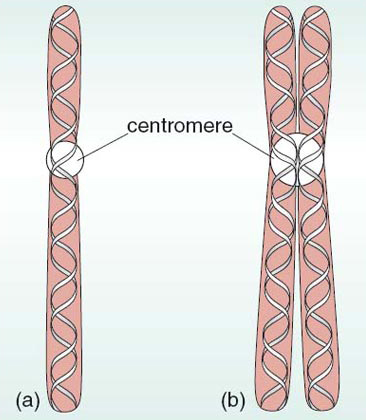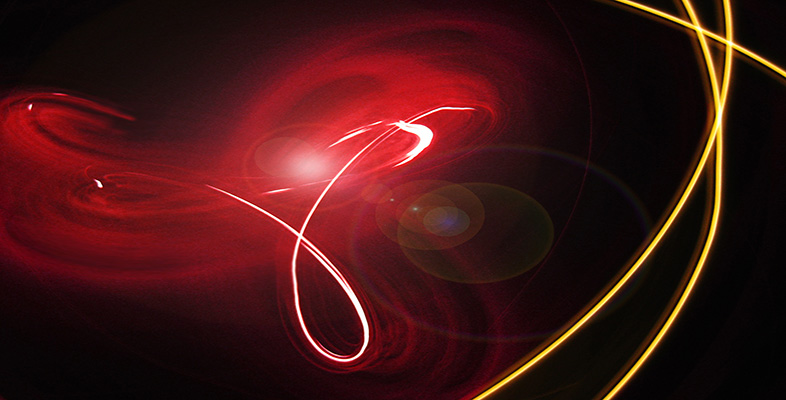1.3 Chromosome structure and DNA replication
DNA replication is closely linked to chromosome replication, which in turn is linked to cell division, which includes the nuclear division of mitosis. This raises an intriguing question: how many DNA molecules are present in a chromosome?
Chromosomes are composed of DNA intimately associated with proteins. When the chromosomes become visible at the beginning of mitosis, the DNA has already been replicated, and the chromosomes are double structures; that is, each chromosome consists of two chromatids. During mitosis, the two chromatids of each pair separate to opposite ends of the cell so that at the end of mitosis each chromosome is a single unit. Evidence suggests that such a single (unreplicated) chromosome contains one continuous DNA double-stranded molecule running along its length, as shown in Figure 7a. That makes a very long molecule! This suggests that, because genes are linked together along the length of a chromosome, each gene must be a short section of a DNA double helix molecule.
Before the next round of cell division begins, each chromosome forms paired chromatids when the DNA is replicated. Each chromatid contains one DNA double helix along its length, as shown in Figure 7b.

